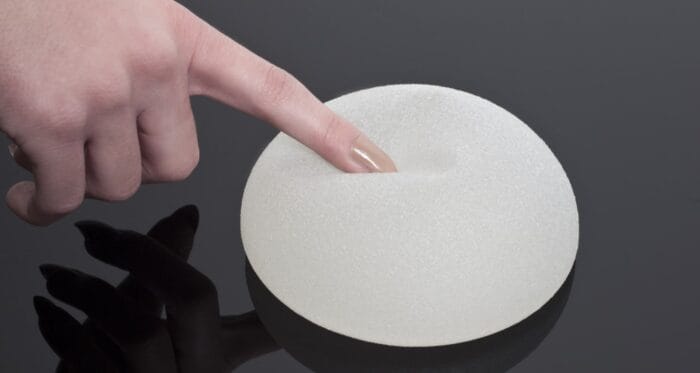

Breast Augmentation Aftercare: What to Expect and How to Prepare
The wait is over! The consultation is a distant memory, your surgical date has long been booked, and now it’s finally approaching. If you’re getting ready for an upcoming breast augmentation procedure, one of the best ways to ensure a smooth experience is to understand what recovery looks like and how to best prepare.

Healing after surgery isn’t just about rest. It’s about giving your body the right environment to recover comfortably and safely. Here are the key steps to take during recovery, from preparing your home in advance to knowing what signs are worth a follow-up call.
Arrange Support for the First Few Days
Breast augmentation is typically performed as a day surgery, but it still requires dedicated recovery time. Just like with any procedure performed under general anaesthetic, you’ll need to arrange for someone to drive you home and stay with you for at least the first 24 hours.
Most patients feel a little sore for a day or two and fatigued for the first few days, especially across the chest as the body adjusts to the implants, so plan for light activity and no heavy lifting (over 20 pounds) for the first week. That includes avoiding lifting pets, children, or even grocery bags. At Lawrence Park Plastic Surgery, we allow patients to return to full activities (including the gym) after one week if they feel up to it, but different practices have different protocols, so make sure to follow your surgeon’s protocol, not what you read on other surgeons’ websites or see on social media!
Driving should be avoided two days after anaesthesia and while taking prescription pain medications. Having help around the house for meals, errands, and childcare during the early days will make a big difference in how supported (and rested) you feel. Remember… just because you can do something doesn’t mean you should!
Follow a Smart Pain Management Plan
Post-operative discomfort is normal and usually described as pressure or tightness rather than sharp pain. Dr. Plant provides a tailored pain management protocol that combines prescription and non-prescription medications to keep you comfortable with minimal narcotic use. Keep the medications you need to take handy. Consider putting them into a pill organizer ahead of time to make it easy to follow your medication schedule and to remember if you’ve taken your dose or not. It is important to follow the schedule closely and avoid self-adjusting doses unless advised.
If you experience severe swelling, fever, or pain that worsens rather than improves, contact your surgeon’s office right away. A smooth recovery is not just about pain relief, it’s about knowing when something isn’t right and acting quickly.
Prioritize Rest and Sleep (But Move a Little, Too)
Sleep is when your body does the most healing. Rest with your head and upper body elevated (propped up with pillows or in a recliner) for the first week to reduce swelling and help keep your chest comfortable. Have some shows and movies loaded up on your favourite streaming service to help pass the time and make sure to have any devices, chargers and remote controls you need nearby so you don’t have to go looking for them (or ask for any favours) when you’re already comfortable.
While rest is important, light walking starting shortly after your procedure is encouraged. Short, gentle walks around the house help improve circulation and reduce the risk of blood clots. Listen to your body, rest when tired, and move when you can.
Prepare Nourishing Foods in Advance
What you eat matters for healing. Aim to prepare meals in advance that are easy to digest and nutrient-rich. In the first day or two after a general anaesthetic, your appetite may be low, so start with bland, light meals like broth, toast, or crackers. Once your appetite returns, then start to include lean protein, whole grains, leafy greens, fruits, and plenty of water to keep your body fueled and reduce inflammation.
Avoid alcohol and limit sodium, which can increase bruising and swelling. Staying hydrated also helps your body flush out anesthetic medications more effectively.
Follow your post-operative instructions
After your breast augmentation procedure you’ll have some instructions to follow, and these will be very different from one office to another. It’s incredibly important to read them carefully and follow them as closely as you can. Although breast augmentation seems like a straightforward procedure that is probably done the same way everywhere, there are actually thousands of subtle differences in how each surgeon performs it. These differences mean that the way one surgeon wants you to recover might cause some serious problems if your procedure was done by a different surgeon. Here are a few of the biggest differences you might find between offices:
To Bra, or Not to Bra…That is The Question
The one thing that probably varies the most from surgeon to surgeon is the post-operative bra. What kind of bra? Does it need to be worn 24/7? For how many weeks or months? Bandeau? No Bandeau?
As you can see, there are a lot of questions that need to be answered, and since each plastic surgeon is, in their own opinion, the smartest surgeon in the universe, they must have a protocol that is their own and is required as part of the “secret sauce” that makes their results better than everyone else’s. All jokes aside, most surgeons do create a specific post-operative bra protocol to help get the best possible results based on the way they do the procedure. Some surgeons will want patients to wear a very specific bra, as tight as they can tolerate 24/7, for the first six weeks after surgery to prevent the implants from shifting. Because Dr. Plant doesn’t want his outcomes to rest on the hope that a bra will hold things perfectly in place, his augmentation involves an internal bra suture that does that job, so our bra protocol is more “wear the bra we give you or anything that doesn’t have an underwire most of the time, for comfort. If it is not comfortable, then loosen it or take it off for a little while.” As you can see, following the wrong instructions in this case could lead to unnecessary discomfort or significantly compromised results
How can I bathe?
Depending on how the incisions were closed and what dressings were used, you may or may not be able to get them wet. We use buried, dissolvable sutures and waterproof dressings so patients can shower starting the next day. Some facilities use external sutures or staples and dry dressings and require patients to sponge bathe for five to seven days after their procedure. Not following the right directions could result in poor scarring, wound healing issues, or even infection.
How much can I bench, you ask? Actually… that’s a good question…
One of the most controversial areas is whether patients with implants in a dual plane or “under the muscle” position are allowed to exercise their chest and if so, when. Our protocol is after one week, but some offices say never again, so it’s critical to find out what your surgeon says and follow that to ensure you have the best possible outcome that lasts as long as possible.
Monitor Your Progress and Know When to Call
Some swelling and bruising are normal and should improve steadily within the first one to two weeks. Incisions typically heal within a few weeks, though scar maturation continues for several months.
You should contact your surgeon if you experience:
- Fever over 38°C (101°F)
- Sudden increase in swelling or firmness in one breast
- Redness or warmth around incision sites
- Shortness of breath or chest pain
It’s better to ask than to wait. Early communication helps prevent minor concerns from becoming major issues.
Book a Consultation with a Qualified, Trusted Plastic Surgeon
Recovery starts with preparation, and that begins before you ever step into the operating room. If you’re considering breast augmentation or want to learn more about what recovery involves, we’re here to help. Dr. Mathew Plant offers detailed, personalized consultations to answer your questions, provide honest advice, and make sure you feel confident about your next step.
Contact us today to schedule your consultation.



